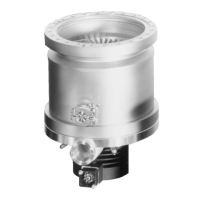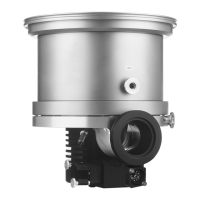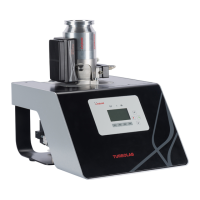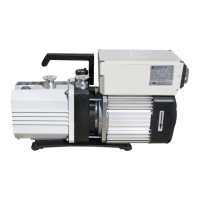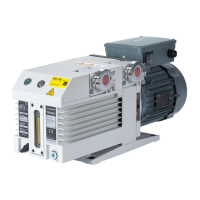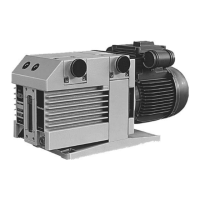Operation
53300855170_002_C8 - 08/2021 - © Leybold
4.5 Venting
Refer to Section 4.1 for suited gases.
Venting Methods
There are three different methods of venting the turbomolecular pump.
The pump can be vented via the venting connection (VENT), by means of a
venting valve, a power failure venting valve, or a venting screw.
Cautious venting of the pump is possible from the high vacuum side, since
here the bearing forces will be lowest. When doing so, no free jet of gas must
be allowed to form on the rotor so as to avoid exposing the rotor to addition-
al forces.
When venting the pump through its foreline connection, neither oil nor par-
ticles may be entrained in the gas flow from the forevacuum side into the
pump.
Speed of the Pressure Rise
All turbomolecular pumps may be vented at full speed
. However, the pres-
sure must not increase faster than specified through the pressure rise curve ,
see Fig. 4.2..
The pump must be vented significantly slower when there is the risk of
particles entering into the pump from the process. During venting, the flow
must be of the laminar type in both the vacuum chamber and the turbomo-
lecular pump.
The pump must not be vented to pressures above atmospheric pressure.
Speed
Pressure rise curve
Particles
1
10
100
0 50 100 150 200 250 300
Zeit [s]
Fig. 4.2 Maximum rise in pressure
Forevacuum pressure [mbar]
Time [s]
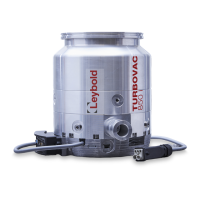
